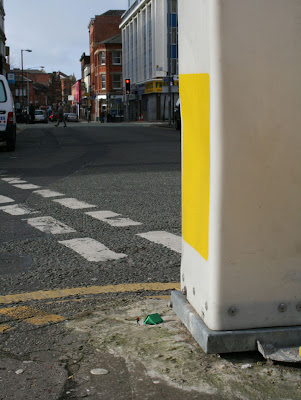Yesterday evening, I received the news that I my proposal for Networked (a networked_book) about (networked_art) was accepted. The other finalists who will be writing essays will be Anne Helmond, Patrick Lichty, Anna Munster, and Marisa Olsen. This is really exciting for me. I’m fascinated by the opportunity to let one of my essays loose to be rewritten by the networked art public. This chapter will also feed the work I’m doing for my book on network culture, so it’s a good kick in the pants for me too. Thanks so much to Jo-Ann Green and Helen Turlington of Turbulence.org, all of the members of the advisory committee, and the NEA for their support of the project.
Below is my (very slightly edited) proposal. I’m thinking that I’d like to put the project on the net early on, to solicit all your input even as its being sketched out, so you’re likely to hear a lot more about it soon.
Forced Exposure:[1] Networks and The Poetics of Reality
Proposal
The real has come to dominate cultural production, both high and low (those categories are more blurred than ever, if not nonexistent)—from reality television to blogs to MySpace to YouTube to the art gallery. But the new poetics of reality is not the same as the old model of realism. First emerging in the eighteenth century—especially in the form of the novel—realism was part of a new fascination with everyday—as opposed to courtly or idealized—life that also manifested itself in the newspaper. Associated with this was the rise of the authorial voice, the seemingly objective narration of the novelist or journalist. Authors constructed a reality assembled according to codes of “realism” for the public. Today, however, both novel and newspaper are in rapid decline, losing sales dramatically. So, too visual art now turns to reality-based forms of production. The codes of realism are being replaced by new codes of reality, constructed around immediacy, self-exposure, performance, and the remix of existing and self-generated content, using readily-available technology to directly engage the audience. But when I discuss realism as coded, I do not mean to say that “reality” media is not coded. Throughout the essay I will identify the codes deployed in “reality” media, be it reality TV, amateur-generated content, or professional “art.”
It is crucial to expand the boundaries of this investigation to go beyond just art that is produced for a small net.art community to cultural production as a whole, high and low, online and not (if anything is not online today in some form). Thus, I am interested not only in what is on Rhizome.org but also what is on television, on YouTube, or in the gallery. Looking only to cultural production found on the Internet ghettoizes that cultural production, isolating and thereby limiting our understanding of the impact of networks and easily accessible, powerful digital technology on culture as a whole. Network culture is not limited to technological developments or to “new media” but rather is a broad sociocultural shift much like postmodernity was in its day. Writing merely about the impact of these technologies by looking only at networked art today would be like looking only at video art to understand the impact of the television. In other words, although maturing digital and networking technologies are inseparable from contemporary culture—as the spectacle of the television was from postmodernity—they must be read within a larger context.
Along with the broadening of the influence of networks and digital means of cultural production past the net.art scene, the turn to realism is very different from the sort of work done by the first net.art generation. Artists such as Vuk Cosic, Jodi, Alexei Sholgun, and Heath Bunting made art that (often deliberately) resembled the graphic and programming demos found on cassette tapes and in computer magazines of the 1980, before computers left the realm of user groups and became broadly useful in society. Instead, the impact of digital technology and networks is much more pervasive and diffuse. Mark Leckey, to take one example, would not normally be seen as a net artist, but his work is thoroughly informed by the cultural turn I am looking at. His goal, as expressed in the video for his Tate prize nomination, describes the poetics of network culture in a nutshell: “to transform my world and make it more so, make it more of what it is.” Over the last few years, amateur-generated content has proliferated on the Internet, particularly in video sharing site YouTube and photo sharing sites like Flickr as well as on blogs. This essay will examine the rise of amateur-generated content as a form of cultural production while reflecting on its use by artists like Oliver Laric, who treats amateur videos as found media loops, or Daniel Eatock, who directly solicits contributions from his audience and posts them to his site. In this genre, as in network culture as a whole, we can see a key difference from postmodernist art: instead of the postmodernist promotion of a populist projection of the audience’s desires, today we have the production of art by the audience, a further blurring of boundaries between artist and public.
[1] The title is an oblique reference to Forced Exposure magazine and the earlier DIY ethic and informal networks of subcultures, which would be covered as “prehistory” of this piece. I’d be delighted if people recognized it, but since they probably won’t, this should alleviate the mystery:https://en.wikipedia.org/wiki/Forced_Exposure



CABL2.jpg)
